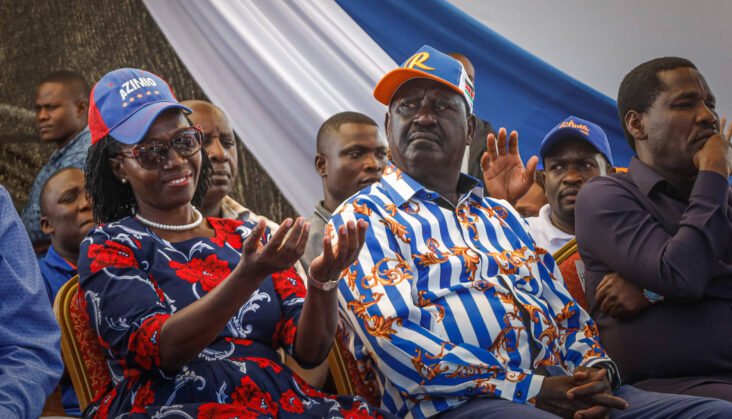[ad_1]
Just a day after he was cleared by the Independent Electoral and Boundaries Commission (IEBC), Raila launched his manifesto, detailing his plans should he win the election. “We have consulted the people of Kenya, they want to see change,” he said while unveiling his agenda.
Ruto however downplayed his rival’s manifesto, saying the former prime minister’s vision will negatively affect the second-hand clothing business.
“Trickle down is dangerous. They branded business people’s merchandise counterfeit and destroyed them. Now clothing enterprises are dealers in dead-people’s wares to be banned. BOTTOM UP, using TVET will assist these enterprises grow from sewing, cottage to textile and leather industry,” Ruto said on Twitter, ahead of his manifesto launch on 30 June.
Trickle down is dangerous. They branded business people’s merchandise counterfeit & destroyed them. Now clothing enterprises are dealers in dead-people’s wares to be banned. BOTTOM UP,using TVET will assist these enterprises grow from sewing,cottage to textile & leather industry.
— William Samoei Ruto, PhD (@WilliamsRuto) June 7, 2022
Overview of the 10-point manifesto
1.’One County, One Product’
- Build a manufacturing factory in each of the 47 counties to generate wealth
2. ‘Kazi Kwa Wote’
- Manufacturing will be the main driver of the government’s economic revolution
3. ‘Fukuza Njaa’
- Maximise Kenya’s agricultural potential to feed the people
4. ‘Inua Jamii, Pesa kwa jamii’
- Introduce a universal basic income of KSh6,000 to some 2 million households in need of help.
5. ‘Azimio La Kina Mama’
- Unlock obstacles to finance women-led businesses and ensure they are proportionally represented at all levels of the government.
6. Hashtag Inawezekana
- A programme aimed at arming the youth with funds, training, and technology to become competitive players at the global level.
7. ‘Baba care’
- A reformed health programme
8. ‘Waste not a single child’
- A programme to ensure all Kenyan children have access to quality education.
9. ‘Maji Kwa Kila Boma’
- A programme to reverse the high cost of water and shortages and to ensure affordable access for everyone, particularly the poor.
10. ‘Administrative Continuity’
- To keep going with the momentum created by the Uhuru Kenyatta administration.
Elias Mutuma, a political analyst based in Nairobi, says while Raila’s manifesto is appealing, it will be hard to live up to. “The challenge is, will the promises be implemented?”
IEBC announces final list of candidates
From a shortlist of 17 names, the IEBC announced that only four candidates “met the requisite constitutional and statutory requirements”.
Press Release: Registration of Presidential Candidateshttps://t.co/ktBIYCWOG3#GE2022 pic.twitter.com/8ib7SpbT7B
— IEBC (@IEBCKenya) June 6, 2022
The other two candidates that made the list are lawyer David Mwaure and Professor George Wajackoyah, a former spy who once went into exile in Britain.
Before the official list was announced, more than 50 aspirants – the highest number ever recorded in Kenya’s electoral history – had expressed interest in succeeding President Kenyatta. No independent aspirant made it to the final list.
To be accepted as a candidate, certain constitutional requirements had to be fulfilled:
- be a Kenyan citizen by birth;
- be a registered voter;
- be a holder of a degree from a university recognised in Kenya;
- be nominated by a political party or be an independent candidate;
- meet the moral and ethical requirements under the Leadership and Integrity Act;
- must not be a person of unsound mind.
Smallest number of candidates
The August poll will have the smallest number of candidates running for presidency ever since the onset of multiparty democracy in Kenya in the 1990s and in comparison to 2017 when eight candidates were on the ballot.
Although there may be four official names on the ballot, this year’s contest is really a two-horse race between Ruto, who fell out with Kenyatta in 2019, and Raila, who now has the support of the outgoing president. Kenyatta has been openly rooting for Raila to become his successor.
[ad_2]
Source link
